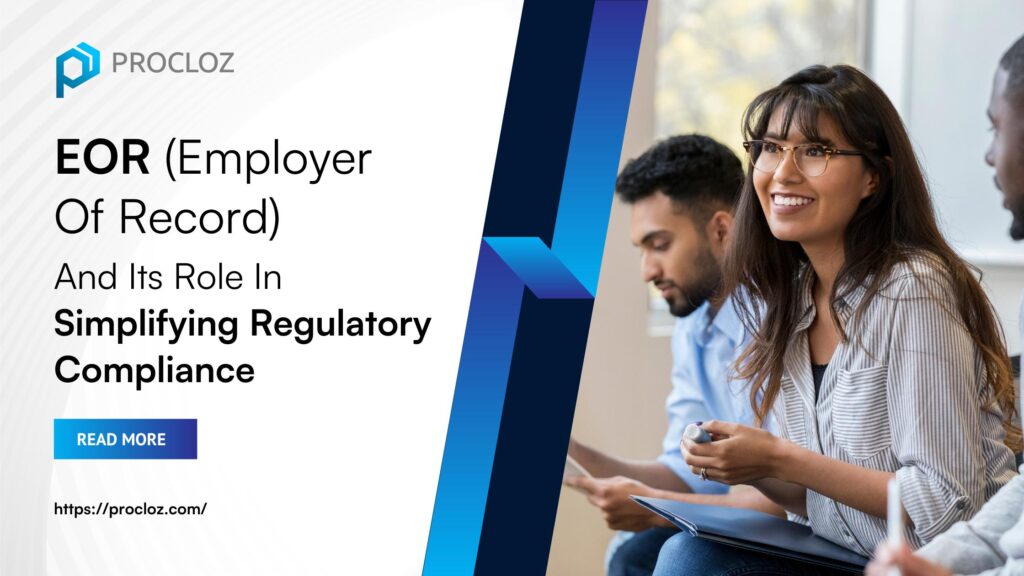EOR (Employer Of Record) And Its Role In Simplifying Regulatory Compliance
In today’s complex and rapidly changing business landscape, the concept of EOR (Employee of Record) has become paramount. With businesses consistently grappling with mounting regulatory compliance challenges, the importance of EOR has never been more evident. This article delves deep into the world of regulatory compliance in business, the intricacies of HR and payroll compliance, and how EOR services can aid businesses in navigating these intricate waters seamlessly.
Understanding Regulatory Compliance
Regulatory compliance refers to the adherence of businesses to various laws, regulations, and standards established to safeguard both consumers and enterprises. It encompasses a vast array of mandates, from industry-specific requirements to broad-ranging standards affecting all businesses. A key question here is, why is regulatory compliance important? The answer is straightforward: non compliance can lead to dire consequences, including legal repercussions and hefty financial penalties. With such a comprehensive list of compliance regulations, it’s clear that businesses must prioritize this area of operation.
The Complexity of HR and Payroll Compliance
When discussing regulatory compliance and risk management, one can’t overlook HR and payroll compliance. The domain of HR and payroll is fraught with continuous evolutions in labor laws, tax regulations, and myriad reporting requirements. Such a dynamic regulatory compliance framework means businesses must expend significant time and resources to stay compliant. Moreover, as the intricacies of payroll tax compliance and other HR-related mandates become increasingly dense, companies often find themselves in an entanglement of documentation and procedures.
Introducing EOR (Employee of Record) Services
EOR services are the beacon for businesses looking to overcome compliance challenges. But what exactly does an EOR entail? An EOR is essentially an “employer of record“, responsible for various employment-related functions, especially those associated with payroll. More importantly, EORs play a pivotal role in handling compliance matters, acting as a shield for businesses against the possible pitfalls of non-compliance.
Simplifying HR and Payroll Compliance with EORs
One of the standout benefits of EOR services is the capability to streamline and simplify HR and payroll compliance. As experts in deciphering the complexity of labor laws and regulations, EORs ensure businesses remain on the right side of compliance. By integrating effective business process management strategies, they facilitate companies in maintaining impeccable records, meeting all necessary deadlines, and adhering to the nuanced requirements of payroll tax compliance. This not only minimizes risks but also frees businesses from the administrative burden, allowing them to focus on core objectives.
Streamlining Global Operations
International expansion brings its own set of challenges, particularly when considering regulatory compliance in business across borders. The myriad of rules and regulations vary from one country to another, making it an extremely tough task for businesses to maintain compliance. This is where EORs prove invaluable. By leveraging EOR services, businesses can seamlessly expand on a global scale, safe in the knowledge that they’re fully compliant. From hiring to managing international employees, EORs act as a conduit, simplifying the process and ensuring all regulatory benchmarks are met.
Conclusion
In conclusion, as the realm of regulatory compliance continues to evolve, businesses must recognize and embrace the significance of EOR services. By offering a holistic solution that addresses both domestic and international compliance needs, EORs are undeniably reshaping the landscape of business process management. For enterprises keen on safeguarding their operations and keen on overcoming the myriad of compliance challenges, exploring EOR solutions might just be the answer.
EOR (Employer Of Record) And Its Role In Simplifying Regulatory Compliance Read More »

